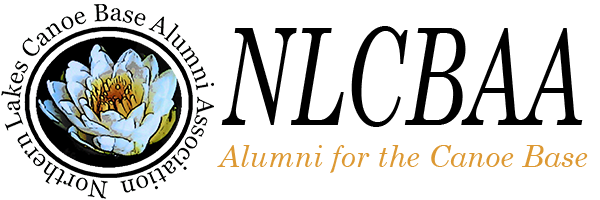What is the Boundary Waters Canoe Area Wilderness?
The Boundary Waters Canoe Area Wilderness (BWCAW) is 1.1 million acres of federally-designated wilderness along the northern border of Minnesota's Arrowhead (the portion north of Lake Superior) and within the Superior National Forest. The US Forest Service manages both the Forest and the wilderness area. With pristine water, clean air, respite from technology, abundant wildlife (eagles, loons, moose, black bears), and hundreds of miles of lakes to paddle and portage, it is a canoer’s paradise. Aircraft is restricted to 4,000 feet and above. Roads and buildings are strictly limited to ranger's cabins and international customs stations, with the only improvements available to visitors being a fire grate and latrine at each designated campsite, and the portage trails. Quetico Provincial Park is Canada’s 1.4 million-acre wilderness to the north, and an easy day’s paddle from the Northern Lakes Canoe Base. Many Girl Scout trips visit border lakes, and our longer trips usually enter Canada. The BWCAW is the most popular wilderness in the United States, but even in 2021, only about 1 out of every 4 visitors is female, let alone a teenage girl.
The Nature of the Border Country
The boundary waters region is bedded in ancient, metamorphosed rock known as the Canadian Shield, which surrounds Hudson Bay. Billions of years of folding, faulting, and erosion made the complex geological surfaces sometimes exposed as "ribbon rock" and forged the region's endless, gray bedrock. During the ice ages 10,000-20,000 years ago, the physical scraping of glaciers in retreat left the land hollowed and dimpled, and thousands of deep, clear, nutrient-poor lakes formed a lattice across the boreal forests of pine, spruce, fir, hemlock, birch, and poplar. Low-growing blueberries thrive in the poor soil, and mayflower, trillium, starflower, bunchberry, and bluebead lily provide charming, trailside vistas as you puff along the portage trails under the weight of your pack.
Native wildlife are critical to the health of the border country's ecological engine, and Girl Scouts often see animals on their canoe trips. Common loons and bald eagles breed on northern lakes, and the mystical, carrying voices of loons are the soundtrack of our days and nights. The songs of chickadees and white-throated sparrows pierce the tall pines, creating echoes of contented productivity. Beavers build dams and lodges on the creeks and rivers, engineering water-management marvels and maintaining critical swamps, marshes, and bogs that clean the waters and nurture an abundance of life. Trout, pike, walleye, and bass flourish in the deep, granitic lakes. Black bears, moose, fishers, and gray wolves range the border country, and Girl Scouts sometimes see bears and moose. Wolves are much harder to see, though you can learn about them and see captive wolves at the International Wolf Center outside of Ely. Moose do not take much interest in humans, and we just wait for them to cross a portage trail or swim past our canoes. Bears are interested in our food, and we take special precautions to control food smells and protect our rations while in the wilderness. Guides are trained to keep our crews safe from large animals, and we have an excellent safety record and a great reputation for leaving the wilderness better than we found it. Girl Scouts follow leave-no-trace principles to retain the wilderness character of the BWCAW and as part of our own Girl Scouting principles.
Humans have lived in the border country for thousands of years. Sheer rock shorelines reveal ancient pictographs, or images made using pigmented paint, drawn by people who once floated in dugout canoes to tell their stories in these paintings. Indigenous peoples of the Anishanaabe culture, also known as the Ojibwe or Chippewa, still live in the area and take part in decisions about how the National Forest is managed. They practice traditional ways guaranteed by treaty. Some four hundred years ago, French Canadians ventured inland along the Great Lakes to carry cargoes of furs back through the Great Lakes and down the St. Lawrence River to the trading posts of Quebec and thence to Europe. These voyageurs traveled by canoe and portaged their gear from lake to lake, much as visitors do today.
Later settlers came to harvest the abundant timber and mine the earth for iron, copper, and nickel. The Iron Range communities, arcing from Grand Rapids to Ely, are built on a rich vein of ore. The forests in the Arrowhead supplied timber to build Chicago and the booming cities of the Midwest and West. Canadians and Americans moved west into this frontier as Europeans flocked from Norway, Sweden, Finland, Denmark, Germany, Austria, Italy, Britain, Poland, and Russia in the 1800-1900s. These industries continue to support the economic backbone of the region today as new immigrants to Minnesota flavor its mix of cultures.
The BWCAW is a unique area of the country. You’ll see the Milky Way bright in the dark night sky, cook over a campfire, travel under your own power, and enjoy true quiet together, with no motorboats, cars, or even airplanes. Sometimes the northern lights dance across our summer nights to the high yodels of loons. The border country is a special place to visit and re-connect with your environment.
What can you tell me about Ely?
Ely, MN, is a fun, small town known as the Gateway to the BWCAW. It seems at least half the cars in town have a canoe on top! Ely was voted the “Coolest Small Town” in 2010, because of its proximity to America’s favorite wilderness, and its great mix of small shops, restaurants, hotels and resorts, attractions like the International Wolf Center and the Dorothy Molter Museum, and a bustling art and music scene in the summer. On any summer evening, you will see outdoor enthusiasts in town either picking up last-minute supplies or sharing stories about their canoe trips. We can point you in the direction of Ely’s great restaurants, souvenir shops, or where to get canoe-trip supplies.
